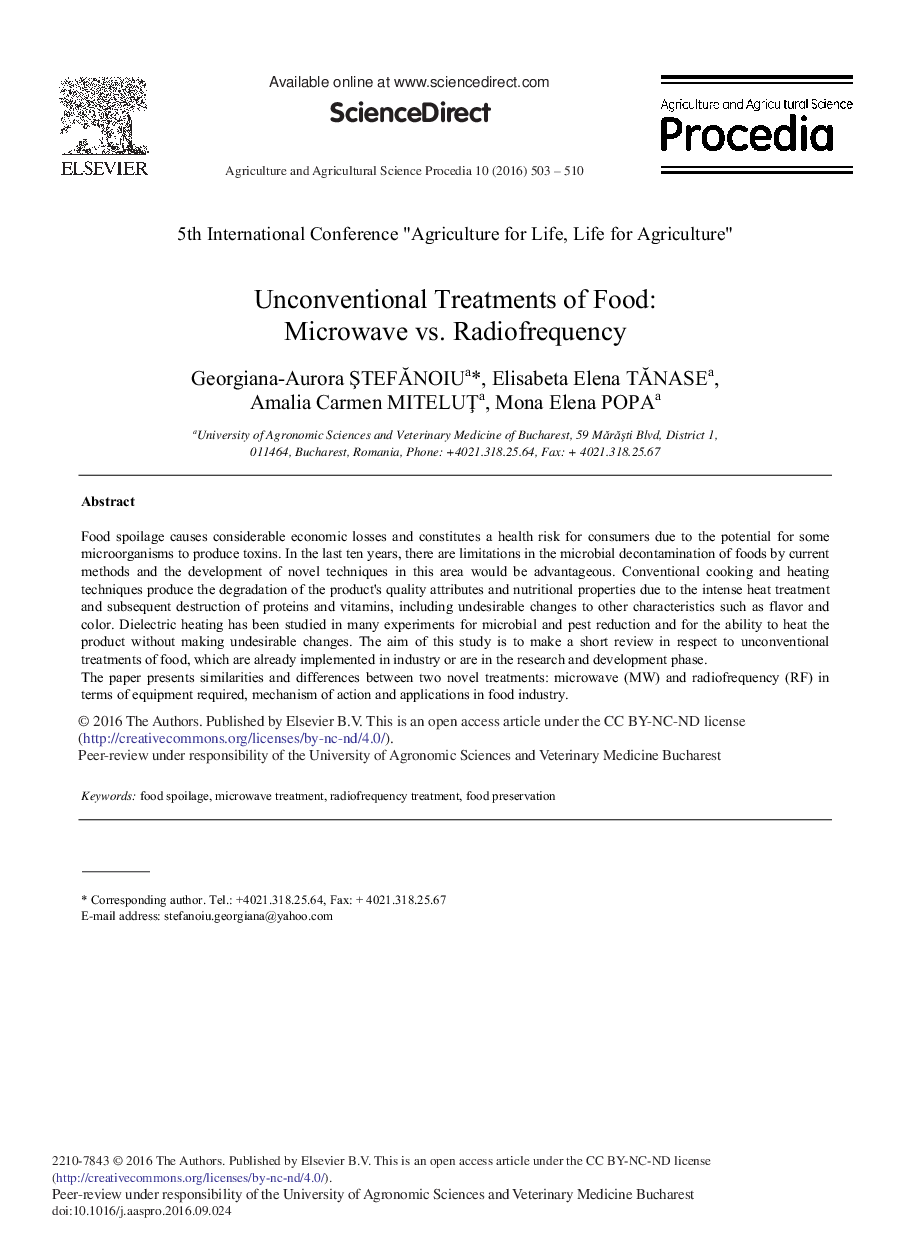| کد مقاله | کد نشریه | سال انتشار | مقاله انگلیسی | نسخه تمام متن |
|---|---|---|---|---|
| 4492199 | 1623284 | 2016 | 8 صفحه PDF | دانلود رایگان |

Food spoilage causes considerable economic losses and constitutes a health risk for consumers due to the potential for some microorganisms to produce toxins. In the last ten years, there are limitations in the microbial decontamination of foods by current methods and the development of novel techniques in this area would be advantageous. Conventional cooking and heating techniques produce the degradation of the product's quality attributes and nutritional properties due to the intense heat treatment and subsequent destruction of proteins and vitamins, including undesirable changes to other characteristics such as flavor and color. Dielectric heating has been studied in many experiments for microbial and pest reduction and for the ability to heat the product without making undesirable changes. The aim of this study is to make a short review in respect to unconventional treatments of food, which are already implemented in industry or are in the research and development phase.The paper presents similarities and differences between two novel treatments: microwave (MW) and radiofrequency (RF) in terms of equipment required, mechanism of action and applications in food industry.
Journal: Agriculture and Agricultural Science Procedia - Volume 10, 2016, Pages 503–510